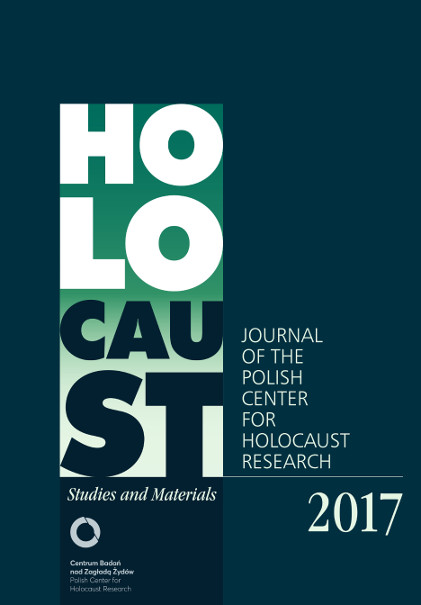Witold Pilecki. Confronting the legend of the “volunteer to Auschwitz”
Zagłada Żydów. Studia i Materiały, No. Holocaust Studies and Materials (2017), Pages: 281-301
Submission Date: 2020-12-06Publication Date: 2017-12-06
 https://doi.org/10.32927/zzsim.720
https://doi.org/10.32927/zzsim.720
Abstract
This article is an attempt to analyse the historical memory of Witold Pilecki functioning in the reference literature and collective consciousness. The author concentrates on their idealising and simplistic elements, which lead to mythologization of Pilecki, and asks about the genesis and purpose of creation of myths about the Captain. Basing on an analysis of the sources, Cuber questions the legitimacy of the two popular expressions used with regard to Pilecki, that is, “volunteer to Auschwitz” and “the author of the first report about the Holocaust.” In this way the author points out the necessity to correct and supplement Pilecki’s biography by means of a careful and cautious analysis of all the available sources.
Keywords
Witold Pilecki , Captain Pilecki , volunteer to Auschwitz , Pilecki’s report , Raport W
License
Copyright (c) 2017 Author&"Holocaust Studies and Materials"

This work is licensed under a Creative Commons Attribution 4.0 International License.
https://creativecommons.org/licenses/by/4.0
The journal is published under the Diamond Open Access Standard, CC-BY-4.0 Deed - Attribution 4.0 International - Creative Commons
Most read articles by the same author(s)
- Ewa Cuber-Strutyńska, Witold Pilecki. Confrontation with the legend of the “volunteer to Auschwitz” , Zagłada Żydów. Studia i Materiały: No. 10 (2014)
Similar Articles
- Ewa Cuber-Strutyńska, Witold Pilecki. Confrontation with the legend of the “volunteer to Auschwitz” , Zagłada Żydów. Studia i Materiały: No. 10 (2014)
- Marta Janczewska, Death in the German Official Language as Exemplified by Jürgen Stroop’s Report , Zagłada Żydów. Studia i Materiały: No. 12 (2016)
- Piotr Trojański, “We need to send him one, because he is a ‘goldsmith’ or ‘Canada man’.” Case of an Oświęcim Camp Security guard , Zagłada Żydów. Studia i Materiały: No. 11 (2015)
- Wojtek Rappak, (The “Karski Report” – Controversies and Interpretations , Zagłada Żydów. Studia i Materiały: No. 10 (2014)
- Agnieszka Haska, Auschwitz from Auschwitz or how to write a bestseller , Zagłada Żydów. Studia i Materiały: No. 16 (2020)
- Monika Adamczyk-Garbowska, Three Visits to Auschwitz , Zagłada Żydów. Studia i Materiały: No. 14 (2018)
- Małgorzata Preuss, Architects of the Holocaust – an Analysis of Operations of KL Auschwitz-Birkenau Central Construction Board , Zagłada Żydów. Studia i Materiały: No. 2 (2006)
- Katrin, One-Way Schedule. Interrogations of Former Reichsbahn Clerks Regarding the Deportation of Jews from Prużany to Auschwitz in 1943 , Zagłada Żydów. Studia i Materiały: No. 12 (2016)
- Paweł Smoleński, Should the Author be Cato? [Michał Wójcik, Zemsta] , Zagłada Żydów. Studia i Materiały: No. 17 (2021)
- Michał Horoszewicz, The Dreyfuss‘ in Auschwitz , Zagłada Żydów. Studia i Materiały: No. 4 (2008)
You may also start an advanced similarity search for this article.
 English
English
 Język Polski
Język Polski



 https://orcid.org/0000-0002-6259-7960
https://orcid.org/0000-0002-6259-7960

